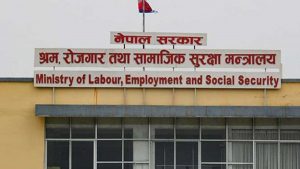In a devastating blow to Nepal’s tourism sector, China’s stringent restrictions on the Kailash Manasarovar pilgrimage have left thousands of entrepreneurs and workers grappling with financial despair. The ramifications of Beijing’s actions reverberate through the vibrant landscape of the Hilsa border point, the gateway to the sacred Kailash Manasarovar in Tibet, China.
Last April, when Beijing announced the reopening of the Hilsa border after a prolonged closure spanning three years, Bijay Lama, a hopeful hotel entrepreneur, anticipated a resurgence in business opportunities. However, his optimism was swiftly shattered when Tibetan authorities imposed severe restrictions on the movement of Indian pilgrims through the border.
The impact was profound. Countless entrepreneurs, like Lama, were compelled to shutter their businesses, leading to widespread unemployment. As the pilgrimage season approached, the outlook remained bleak, with little hope of relief in sight.
China’s decision to reopen some border points to Nepal seemed promising, but it came with caveats, particularly targeting Indian pilgrims. Many attribute these restrictions to the escalating geopolitical tensions between India and China, which have culminated in collateral damage for Nepal’s tourism sector.
The ramifications of these restrictions are profound. Thousands of Indian pilgrims, traditionally a significant source of revenue for Nepali businesses, were barred from visiting the revered pilgrimage site. Consequently, Nepal’s hospitality industry suffered substantial losses, with scores of hotels, tour operators, porters, and aviation companies facing financial ruin.
Prior to the COVID-19 pandemic, the Hilsa border witnessed a steady influx of approximately 15,000 tourists annually, embarking on the spiritual journey to Kailash Manasarovar. However, the pandemic-induced closure of the border for four years dealt a severe blow to the region’s economy. Despite the resumption of operations in April last year, the tourism sector continued to languish, with hopes of recovery dashed by ongoing restrictions.
The Kailash Manasarovar Yatra holds immense significance for Nepali tour operators, representing one of the most lucrative packages in their portfolio. The pilgrimage season, spanning from April to October, typically injects vitality into the tourism industry, bolstering government revenues and sustaining livelihoods across various sectors.
However, the current scenario paints a starkly different picture. Entrepreneurs like Bijay Lama lament the impending demise of their businesses, foreseeing another year of dismal prospects. The Hilsa border, a vital artery for pilgrims journeying to Kailash Manasarovar, remains desolate, devoid of the vibrant hustle and bustle that once defined it.
Traders in Hilsa, faced with approximately three feet of snow, grapple with the harsh realities of a winter devoid of economic activity. The once-thriving hub now stands eerily silent, a stark contrast to its former vitality. Karma Lama, another tourism entrepreneur, reminisces about the bustling mornings when the border teemed with activity, now replaced by a haunting stillness.
The plight of tour operators underscores the profound impact of China’s restrictions. Tibetan authorities’ denial of access to nearly 50,000 Indian pilgrims, who had booked the Kailash Manasarovar Yatra, underscores the magnitude of the crisis. Forced to divert to alternative destinations within Nepal, these pilgrims represent a lost opportunity for Nepal’s tourism industry.
In 2023, Nepal experienced a record influx of Indian visitors, surpassing the 300,000 mark for the first time, fueled primarily by the allure of the Kailash Manasarovar Yatra. However, the current predicament paints a grim reality, with hotels like Manasarovar Hotel in Hilsa standing vacant, devoid of visitors.
The Nepalgunj-Simkot-Hilsa-Manasarovar route, once bustling with activity, now lies dormant, its promise unfulfilled. The absence of Indian pilgrims has dealt a severe blow to the region’s economy, leaving businesses on the brink of collapse. With temperatures plummeting to minus 17 degrees Celsius, the harsh winter exacerbates the challenges facing the region.
As the border remains sealed, hopes for a revival dwindle, leaving businesses and livelihoods in limbo. The once-thriving community of Hilsa grapples with the harsh realities of an uncertain future, with little respite in sight.
In conclusion, China’s restrictions on the Kailash Manasarovar pilgrimage have plunged Nepal’s tourism industry into turmoil, leaving entrepreneurs and workers reeling from the devastating impact. As the region grapples with the fallout of these restrictions, the path to recovery remains uncertain, casting a shadow of uncertainty over the future of Nepal’s tourism sector.
















Comments